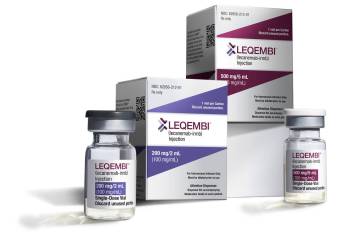How dangerous is metallic mercury? An explainer of exposure risks
The closure of Johnson Junior High School and relocation of a Las Vegas family after discovery of approximately a quarter-cup of mercury in the school gym have raised concerns about the potential health effects of the toxic element.
Here are the answers to some frequently asked questions about mercury and its impact on humans:
QUESTION: What is mercury?
ANSWER: Mercury is an element that occurs naturally in the environment in a salt form or in rock, such as cinnabar. There are three chemical forms of mercury – metallic or liquid mercury, methylmercury and mercury compounds. Metallic mercury, also known as elemental mercury or quicksilver, is what was found at Johnson Junior High.
Q: What is it used for?
A: Besides being a mainstay of middle and high school chemistry labs, metallic mercury is used in a number of commercial products, including older oral thermometers, barometers, sphygmomanometers (devices used to test blood pressure), wall thermostats, fluorescent light bulbs/tubes, some batteries, electric light switches, some indoor gas meter regulators (in houses built before the 1960s), and for a variety of other purposes. It also was historically used in silver and gold mining.
Q: Is it dangerous?
A: Mercury can damage the human nervous system, though the impact of exposure depends on a number of factors, including the type of mercury involved, how much has entered a person’s body, the length of exposure and the body’s response to the substance, according to the Southern Nevada Health District. Metallic mercury, the type found at Johnson Junior High, is not readily absorbed into the human body by touch or through the digestive tract, but it does vaporize at room temperatures and inhalation of these vapors can be harmful, according to the CDC’s Agency for Toxic Substances and Disease Registry.
Q: What’s the risk from inhalation?
A: Metallic mercury mainly causes health effects when inhaled during prolonged and/or acute exposures, according to the U.S. Environmental Protection Agency. Among the symptoms of such exposure are tremors; insomnia; emotional changes (such as mood swings, irritability, nervousness, excessive shyness); headaches; neuromuscular changes (such as weakness, muscle atrophy, twitching); disturbances in sensations; poor performance on tests of mental function; and changes in nerve responses.
Higher exposures may also cause kidney effects, respiratory failure and death, according to the EPA.
The CDC’s toxic substance registry notes that most of the effects of mercury resulting from prolonged lower-level exposure are reversible, once exposure is terminated.
Q: How can mercury affect children?
A: Young children are more sensitive than adults to the effects of mercury. Children 5 or younger are considered to be particularly sensitive to the effects of mercury on the nervous system, since their central nervous system is still developing. Dr. Daliah Wachs, a family medicine physician and assistant professor at Touro University Nevada in Henderson, said that because “just a touch” of mercury can be dangerous, it’s important to limit exposure of children and ensure that areas contaminated with mercury are properly ventilated and cleaned. Wachs said it appeared the school appropriately responded by screening all possibly affected students and limiting exposure. “The school knew how to handle a mercury accident,” she said.
Q: Is there a medical test to show mercury exposure?
A: Blood or urine samples are used to test for exposure to metallic mercury. Once exposure has stopped, the mercury level in the blood begins to drop rapidly, so blood tests are useful only for continuing or very recent exposures.
Q: What should you do in the event of mercury exposure?
A: Call the American Association of Poison Control Centers hotline at 1-800-222-1222 or visit a medical provider immediately to ensure exposed individuals are in good health and that the mercury is cleaned up and disposed of properly.
RELATED
EPA clears Johnson Junior High to reopen Tuesday after mercury contamination
EPA recovers quarter-cup of mercury from Las Vegas school as cleanup continues
EPA clears kids' belongings after mercury discovery at Johnson Junior High






























